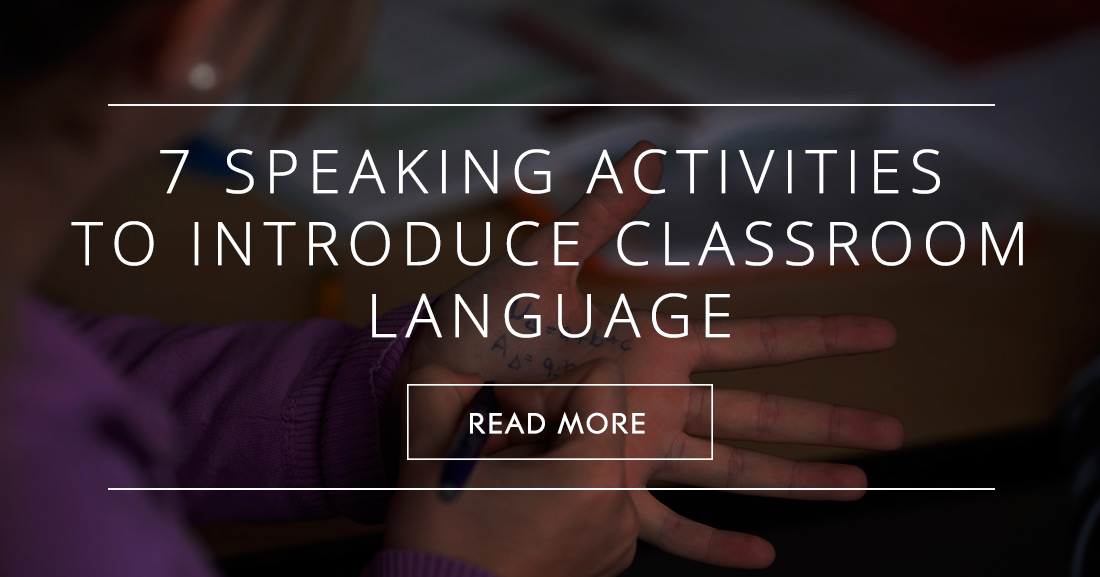Break the Back-to-School Ice! 10 Fun Icebreakers for the Beginning of the Year


Whether you have new students, beginning-level students, or young students, it’s crucial to review some key vocabulary before you begin the new school year in order to build their confidence in speaking about these necessary items throughout the year. Try these activities for building up their classroom language.

Each classroom is different, so spend some time thinking of the important words you want your students to know. Since these are items they’ll be encountering daily, make sure they get introduced either directly or indirectly early on. They may or may not already know some of these words, so don’t be afraid to challenge them and give them many words in the first week. Here are some suggestions to get you started.
Supplies: desk, book, paper, pen, pencil, notebook, binder, syllabus, iPad, marker
Rules: Imperative grammar, don’t, should, must, can, can’t
People: Student, teacher, classmates, principal, director
Classroom: clock, board, computer, calendar, poster
Requests: question formation, bathroom, water, feeling sick
Respectful words: please, thank you
A great way to introduce or review these words is to practice them in dialogues accompanied by pictures. These will take some time to create, or you can scan the Internet to find some already written. Practice a variety of dialogues such as a conversation between two students, a conversation between a teacher and a student, and a conversation with the whole class. Give each pair the same dialogue to practice, and then discuss the dialogues as a whole group and answer any questions. Alternatively, you could give each pair a different dialogue to practice in pairs first and then with the whole class. Make sure you rotate the dialogues so that all students can get practice with each scenario.
If you have more advanced students, give them role play contexts rather than dialogues. Prepare a written context or give them a picture with two people in a classroom and have them construct the dialogue for this picture. If you give each pair the same picture and have the students present their dialogues for the class. Going over the similarities and differences between the dialogues can lead to some great conversations about the variations of speech they may hear.
Another great activity for lower-level students to review the tangible items in the room is the classic game I-Spy. If you want to provide more practical language, change the name of the game to “I can see something...” Depending on the level of the students, you may need to review some adjectives and descriptive vocabulary as well before you begin. If the level of your students is too low to give adequate descriptions, change the game to Pictionary. Have one student come up to the board and you show them a vocabulary word. Have the student draw the word on the board and the other students try to guess the vocabulary word.
Have students in groups separate into different parts of the room. Together, they have to find and identify everything in their corner of the room, and then introduce the class to all of the objects in their room. They can use their dictionaries if they want. Have students rotate around the room to get practice describing different areas.
If you’re unsure of your students’ levels, it’s best to let them show you first what they already know so you don’t have to waste time repeating information. Put students into groups and have them think about all of the school related words they know. The group who has the longest list wins! Alternatively, prepare a set of pictures of classroom-related words on it and have the groups label as many as possible.
Use the words as often as possible and in as many ways as possible. Say, write, and point to the words in all appropriate contexts. When an appropriate time comes up, not only should you repeat the word clearly, but have all of the students repeat after you to practice using the word in the correct contexts.
Another extremely important factor to consider is making students feel very comfortable with using this practical vocabulary. Use fluency games to build their familiarity and speed in recalling the vocabulary. One way to achieve this goal is to do a hot potato game. Have students stand in a circle and toss a small object around the circle. When a student receives the object, they should say a vocabulary word within three seconds. If they stall or take longer than three seconds, they have to leave the circle. To make it more challenging, students also must leave the circle if they repeat a word already said by a different student. Feel free to adapt this activity to the level of your students, such as using words that start with the same letter or words that are related to each other.
The beginning of the year is the most critical part of the year. Teachers need to make sure that they set the boundaries of the classroom, create a supportive classroom environment, and equip students with the tools they need for the year. Classroom vocabulary is the foundation to a successful rest of the year, so it’s a step you don’t want to skip ! Be sure to try these activities to build students’ speaking skills and their mastery of the basic English vocabulary words they will use on a daily basis.
How do you make sure students have the right vocabulary necessary right from the beginning?